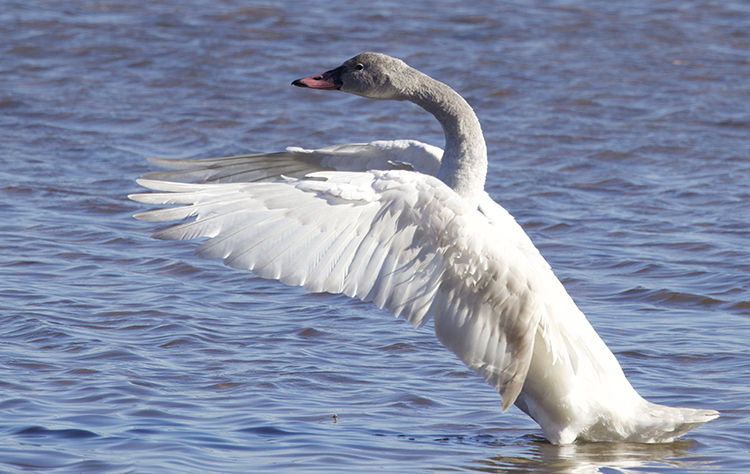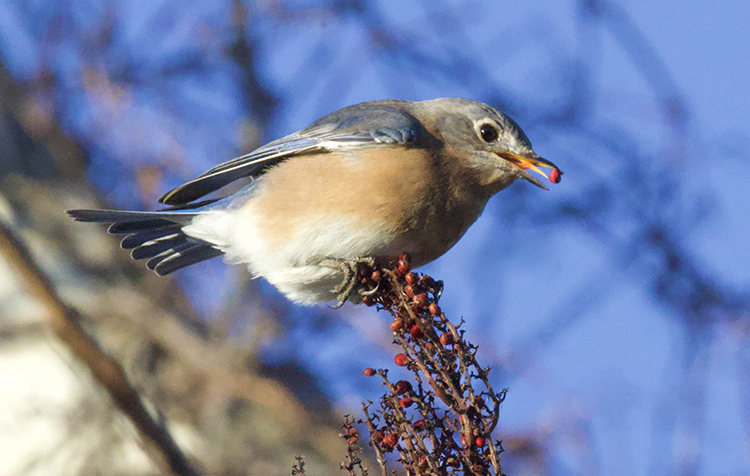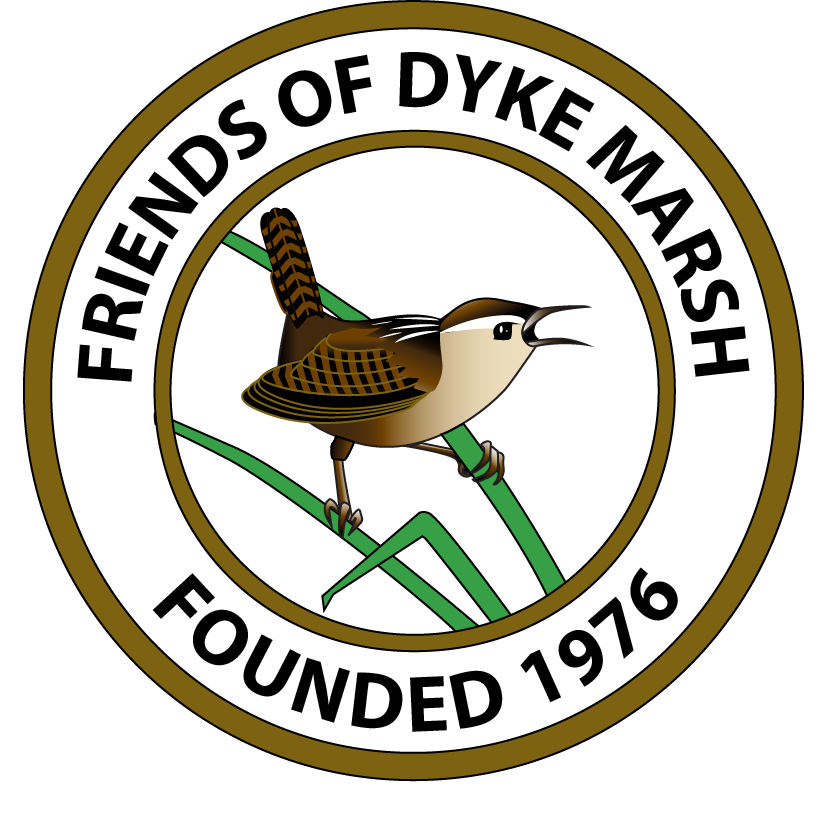Winter brings several species of migratory waterfowl to the Potomac River and Dyke Marsh and many birds stand out as they perch on leafless tree limbs, search for prey and forage on the ground. Still some, like barred owls (Strix varia) are expert at camouflaging.
Tundra swans
 |
| Tundra swan (Cygnus columbianus) Photo by Ed Eder |
FODMer and expert birder Ed Eder snapped a photo of a juvenile tundra swan (Cygnus columbianus) in Dyke Marsh in November 2022. Every year, these elegant birds migrate from their Arctic breeding grounds over 3,500 miles at 50 miles per hour and around 200 to 400 spend the winter at our “sister” wetland, the Great Marsh of Mason Neck State Park.
These almost pure white waterfowl are about 48 inches in length, have a 66-inch wingspan and can weigh up to 23 pounds. They have black legs and feet and a boldly black bill with a yellow spot at the bill’s base. Juvenile birds have a gray tinge. Some may have a “dirty” head and neck because of tannin in the water, a natural byproduct of decaying vegetation. You can learn more here: http://www.connectionnewspapers.com/news/2022/dec/15/winters-elegant-visitors-mount-vernon/.
Barred owls
 |
| Barred owl pair (Strix varia) Photo by Ed Eder |
Some bird-savvy visitors to Dyke Marsh have enjoyed observing a roosting barred owl pair (Strix varia) in Dyke Marsh in late December 2022. These owls have dark eyes and brown-and-white striped, vertical bars, hence the name. They can fly almost noiselessly through the canopy and they hunt small animals like rodents at night. Mature forests near water are prime habitat for these non-migratory birds.
These owls are easier to hear than to see. They make a hooting call which many people say sounds like “Who-cooks-for-you? Who cooks for you-all?”
Barred owls breed in Dyke Marsh. A pair raised two young in Dyke Marsh in the spring of 2022 (see below). They usually nest in tree cavities, around 20 to 40 feet high in a large tree and lay from one to five eggs.
Eastern bluebirds
 |
| Eastern bluebirds (Sialia sialis) Photo by Ed Eder |
Several people have spotted Eastern bluebird (Sialia sialis) flocks in Dyke Marsh this winter, 2022. In the spring, males have a brilliant royal blue back, red-brown on the breast and blue tinges in the wings. Females are grayer. They tend to perch on wires and low branches and scan the ground for prey. In the winter, they eat berries. For nesting, they use old woodpecker holes and nest boxes. A bluebird is two-thirds the size of an American robin (Turdus migratorius).

